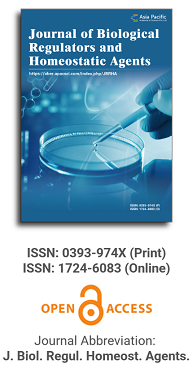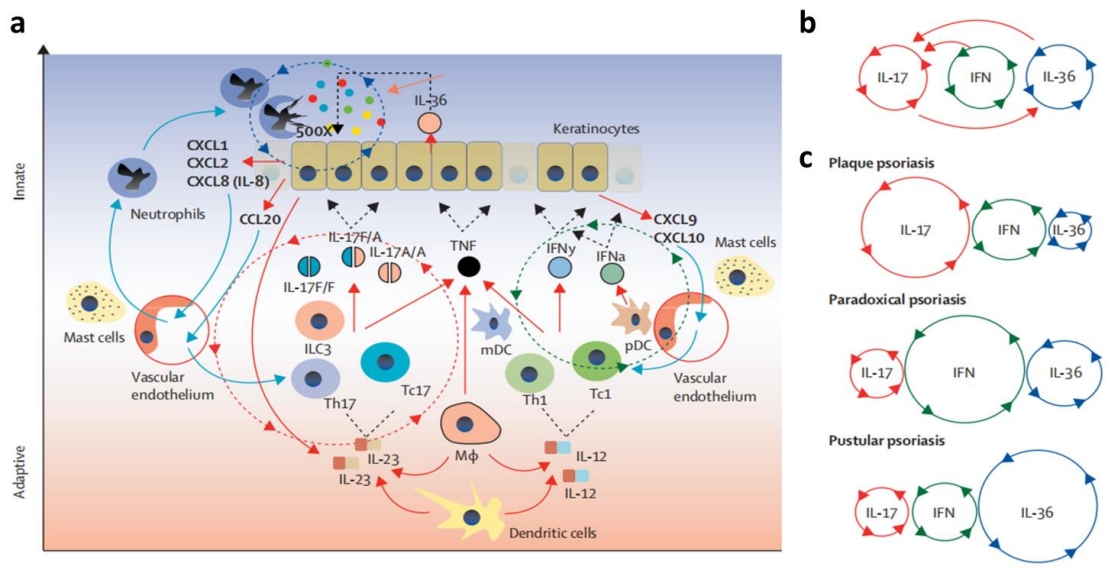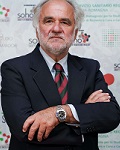
Publication Frequency
Quarterly since 2025
Journal Articles
Search
Search scope
Journal Center
Asia Pacific Academy of Science Pte. Ltd. (APACSCI) specializes in international journal publishing. APACSCI adopts the open access publishing model and provides an important communication bridge for academic groups whose interest fields include engineering, technology, medicine, computer, mathematics, agriculture and forestry, and environment.
Volume Arrangement
2025
Featured Articles

Psoriasis is a common, chronic, and inflammatory skin disease. Macrophages account for about 61.3% of the inflammatory cells infiltrating psoriatic lesions. Modulating macrophage polarization, inhibiting their infiltration, and targeting the secretion of inflammatory factors and associated inflammatory pathways by these cells can alleviate psoriasis symptoms and inflammation. Moreover, nanomaterials as novel drug carriers, offer unique advantages such as large surface area, easy modification, high biocompatibility, good biodegradability, enhanced systemic adsorption, etc. Nanomaterials have great potential for efficient drug delivery and release, as well as improving therapeutic efficacy while reducing adverse effects. By systematically addressing the role of macrophages in psoriasis pathogenesis and the potential of nanomaterials in treating psoriasis through modulating macrophages, this review enhances our understanding of the disease mechanism and holds promise for novel therapeutic breakthroughs and advancements in the future treatment of psoriasis.
Causal Role of Immune Cells in Gastric Cancer: AMendelian Randomisation (MR) Study
Article ID: 3514
Vol 39, Issue 1, 2025
DOI: https://doi.org/10.23812/j.biol.regul.homeost.agents.20253901.15
Vol 39, Issue 1, 2025
Received: 19 July 2024; Accepted: 2 August 2024; Available online: 16 January 2025; Issue release: 31 January 2025
Download PDF
Abstract
Background: Observational studies have reported an association between immune cells and digestive diseases. We sought to
assess the relationship between immune cells and the risk of gastric malignancy by two-way two-sample Mendelian randomisation
(MR) analysis.
Methods: This study used a comprehensive two-sample Mendelian randomisation (MR) analysis to determine the causal relationship between immune cells and gastric malignancy (GC). Based on publicly available genetic data, we explored the causal
relationship between 731 immune cell signatures and GC risk. We performed Mendelian randomisation (MR) analyses using
genetic variants strongly associated with neutrophil, lymphocyte, eosinophil, basophil and monocyte counts as instrumental variables (IVs). Comprehensive sensitivity analyses were used to verify the robustness, heterogeneity and horizontal pleiotropy of
the results.
Results: Two-sample MR analysis revealed that multiple immune cell phenotypes were significantly associated with the risk of
gastric malignancy. Among the phenotypes with low uncorrected p-values, including CD14- CD16- AC (p < 0.001; OR = 0.9730;
95% CI = 0.9598–0.9863); DN (CD4- CD8-) AC (p < 0.001; OR = 1.1483; 95% CI = 1.0607–1.2432); IgD on IgD+ (p < 0.001; OR
= 0.8883; 95% CI = 0.8289–0.9520). Meanwhile, we used Simple mode, Weight median, and Weight mode, all of which led to the
same conclusion. Moreover, in our further analysis, gastric malignancy also had a causal effect on the above immune cell types
when gastric malignancy was used as an exposure factor, and the results were statistically significant.
Conclusion: The study underscores the crucial role of immune cells in GC development, providing key insights for future research. The statistically significant associations between specific immune cell phenotypes and gastric malignancy risk highlight
potential targets for therapeutic interventions aimed at modulating the immune response in GC, thereby opening avenues for
precision medicine approaches in the treatment of this disease.
Keywords
immunity; gastric cancer; MR analysis; sensitivity; causal analysis
References
Supporting Agencies
Copyright (c) 2025 Peng Gao,Qiangxin Zheng,Junqing Gan,Jie Song,Wenting Jia, Jilong Yang

This site is licensed under a Creative Commons Attribution 4.0 International License (CC BY 4.0).
Editor-in-Chief

Medical Genetics, University of Torino Medical School, Italy
Co-Editor-in-Chief

Department of Biomedical, Surgical and Dental Sciences, University of Milan, Italy
Indexing & Archiving
News & Announcements
2025-02-01
In addition to the first issue that has already been published by the original publisher, there will be four more issues released this year, with scheduled publication dates in March, June, September, and December respectively.
2025-01-21
Starting from Volume 39 Issue 2 (2025), the ownership of Journal of Biological Regulators and Homeostatic Agents (ISSN: 0393-974X (P); 1724-6083 (O)) will be transferred from Biolife Sas to Asia Pacific Academy of Science Pte. Ltd. As of 21 January 2025, authors should make submissions to the new journal system and follow the author guidelines. Asia Pacific Academy of Science Pte. Ltd. will take over the publication of manuscripts being processed.

